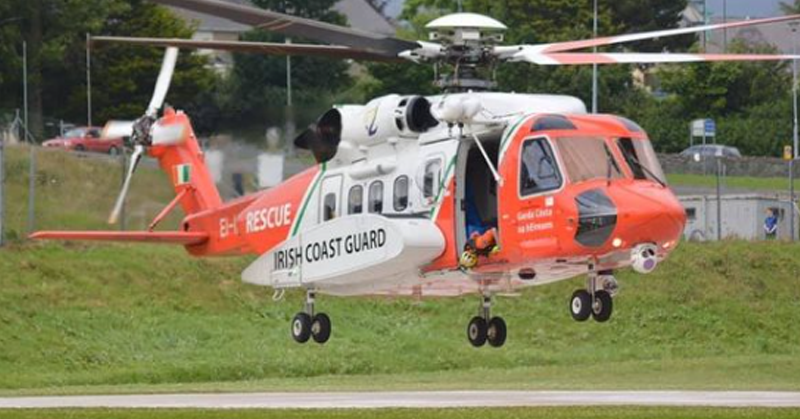Concerned community members on Arranmore island are calling for a pause on the planned replacement of the Irish Coast Guard helicopter.
With the new helicopters unable to carry stretchers on air ambulance missions, islanders say that the needs of the west coast are being overlooked during the transition.
The Sligo-based Sikorsky S-92 helicopter is due to be switched to the Leonardo AW189 in December.
The more modern aircraft is being provided through a contract changeover to Bristow Ireland, with full operational capability to be in place by early 2026.
The stretchers used on board the AW189 are suitable for search and rescue missions but are not yet compliant with regulations for Hospital Emergency Medical Service (HEMS) flights.
John McCafferty, Community Development Manager on Arranmore Island, says this brings significant safety and operational concerns for island communities and fishermen.
Mr McCafferty, who volunteers on emergency operations on the island, says there is a case for retaining the S-92 in active service on the West Coast, given the unique and varied services it provides.
The government has welcomed the AW 189 fleet as modern, technologically advanced, and fuel-efficient helicopters.
“I don’t think it’s realised what is happening on the west coast, it’s a different animal from the east coast,” said John.
It’s estimated that the AW189 has a maximum range of 180 nautical miles with 15-minute on-scene time, whereas the S-92 can travel up to 250 nautical miles and provide 30-minute on-scene time.
“From the Shannon and Sligo bases, the range of calls they get could be 200 miles off shore,” said John.
In the past two days, the Sligo-based Rescue 118 helicopter has completed two medivacs from Arranmore to Letterkenny University Hospital.
“The S-92 is an absolute lifesaver for us,” said John. “Both medivacs involved patients being wheeled from the ambulances into the back of the aircraft. Now, with every call, it’s on the tip of our tongue – ‘what happens when the chopper comes?’.
“In the case of the chopper, you will be transferring a patient onto a basket stretcher, outside on the tarmac, then pushing them onto the floor. Doing that in the middle of winter will be a different story.”
During an RTE Prime Time investigation this week, director of the Irish Coast Guard, Micheál O’Toole said that the issue over stretcher compliance is due to be resolved by Bristow Ireland “imminently”.
Mr O’Toole said that the primary role of the Irish Coast Guard is search and rescue.
“We have had no reduction in service either in the search and rescue category or in terms of our ability to deliver for the national ambulance service and the HSE across our other bases,” he said.
It’s also reported that the internal cabin height of the AW189 is too small for crew members to stand up straight, and to carry both medical emergency equipment and SAR equipment on the same mission.
John said: “Think of the crew, they are trying to work on a casualty that could have severe trauma, and they are working on their knees in a cramped position. At the moment, they have their space and equipment in front of them. It makes no sense at all.”
John also points out that due to the 200-mile reach of Ireland’s European Economic Zone, the AW189 helicopters like those poised to replace the S-92 may not be able to reach the border of Ireland’s territory, creating another worry for Killybegs fishermen.
“The safety of patients, islanders, offshore workers, and emergency crews cannot be compromised,” he said.
“The Sikorsky S-92 has proven itself over more than a decade of service in Ireland as a capable, and versatile aircraft. Its superior range (250 nautical miles), capable of reaching as far westward as Ireland’s EEZ limits, capacity for two stretchers, rear-loading capability, and ability to carry out both SAR and HEMS missions simultaneously make it irreplaceable under current operational needs.
“Until the AW189 is proven to meet all these requirements—and is fully certified, equipped, and tested in the Irish SAR/HEMS environment—the S-92 must be retained on the West coast to maintain continuity of care, compliance with international obligations, and above all, to save lives.”








